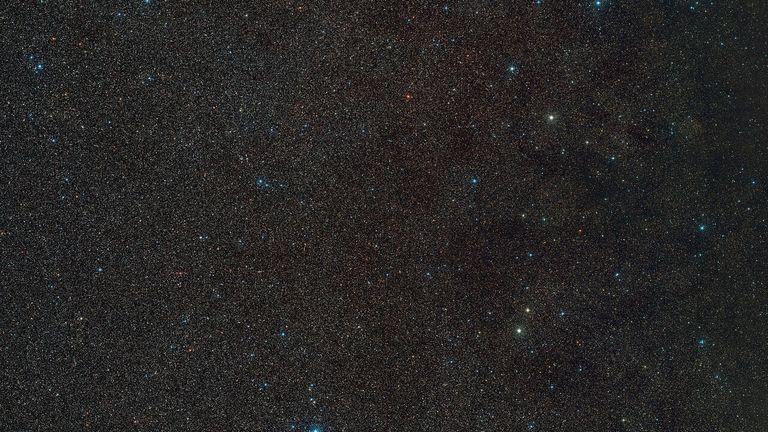Astronomers have discovered the “most massive” stellar black hole in the Milky Way to date.
The newly discovered black hole is 33 times larger than the sun and lies 2,000 light years away.
A stellar black hole forms when a star collapses – and so far, those found in our galaxy have been around 10 times larger than the sun in terms of mass.
Scientists from the European Southern Observatory’s Gaia mission noticed the black hole after a star was spotted flickering as it orbited the area. It was named Gaia BH3.
“No one expected to find a high-mass black hole nearby, undetected until now,” said Pasquale Panuzzo, an astronomer at the Paris Observatory’s National Center for Scientific Research.
“It’s the kind of discovery you make once in your life as a researcher.”
Important clues
Gaia BH3 is the second closest black hole to Earth, located in the constellation Aquila, which means “eagle” in Latin. From Earth, the constellation is thought to be shaped like an eagle.
The “wobbly” star orbiting it is thought to give important clues to how the black hole formed, as stars in pairs tend to be similar.
Learn more:
Tim Peake hopes to return to space
British prototype could pave way for constant energy from space
Incredible images of a total solar eclipse from space
How do stellar black holes form?
When stars reach the end of their lives, most of them swell, lose mass and cool to form “white dwarfs”.
Stellar black holes are thought to form when a star contains no heavy elements and loses less mass over its life – these are called “metal-poor” stars. Then, instead of transforming and cooling into a white dwarf, it collapses in on itself and forms a black hole.
Gaia’s companion star BH3 is a very metal-poor star, suggesting that the star that collapsed to form BH3 was also metal-poor.
According to NASA, scientists have discovered around fifty stellar black holes in the Milky Way.
In January, scientists discovered the oldest black hole of all time, dating back to the beginning of the universe, more than 13 billion years ago.
Spotted using the James Webb Space Telescope, this black hole devours an ancient galaxy called GN-z11, located 13.4 billion light years away. The universe is estimated to be 13.7 billion years old.




